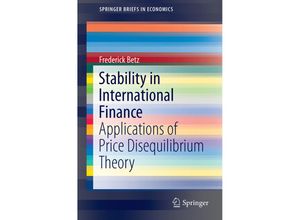This book aims to explore stability in an international financial system using disequilibrium
theory. It examines historical cases of both instability and stability and reviews
price-disequilibrium theory to construct a theoretical model for a stable international
financial system. In the modern knowledge economy in a global world financial socio-technical
systems still continue to be central to global commerce. Moreover technological advances in
computer and communications have changed both the knowledge economy and the financial system.
While globalization and technology have made international finance more powerful and important
to knowledge economies they have also increased the volatility instability and fraudulent
use of international finance. The international world has not experienced a long-term stable
financial system after 1913. International financial systems have been periodically unstable
triggering financial crises and resultant economic depressions in different nations. Yet the
global economy cannot develop properly without a stable international system which distributes
wealth to economically productive activities. How then can a stable and modern
international-financial-system be constructed? In this provocative volume the authors applies
the cross-disciplinary analysis of societal dynamics to important economic writers to derive a
new approach to the problem of stabilizing international financial systems.

